The Women in Science Conference 2021: Challenges are simply a problem waiting for a solution
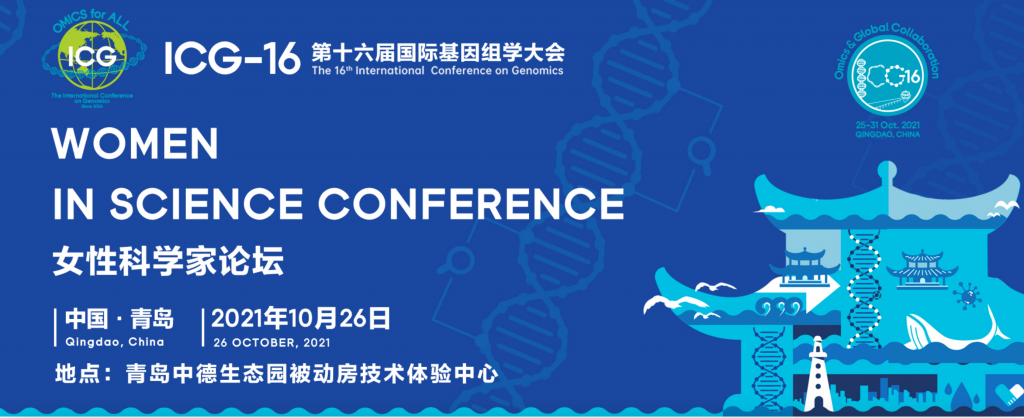
As an Open Science journal, one of the main aims of GigaScience has always been to break down barriers. Both in the access of research and the underlying data and code supporting it, and the barriers holding back the researchers themselves. See our recent Review centering on inclusivity on the organization of meetings to see how it is important from an Open Science perspective. With that in mind, GigaScience has organized the annual Women in Science Conference for seven consecutive years (see a previous write-up here).
The 7th annual Women in Science Conference took place on the 26th October 2021 in the Chinese seaside city of Qingdao, as a satellite meeting of BGI’s long running International Conference on Genomics (this year ICG-16). This year’s Women in Science conference was again organized by our Publishing Director Laurie Goodman, and helpfully co-chaired by Ying Gu of BGI Research. It brought together both young and more experienced women researchers in the field of life science and big data research, covering a wide range of fields of life science, including evolution, omics, cancer, complex diseases, reproductive health, technology development and bioinformatics. Providing a safe space and platform for women scientists to present their work and to discuss the deeper issues that affect women in science. In addition, it also provides young female researchers with an opportunity to communicate and learn from well-known female scientific predecessors.
Women in Science forum is now kicking off in Qingdao,#China , on the 16th International Conference on Genomics (#ICG16)! Thanks Dr Laurie Goodman and colleagues at @GigaScience #omicsforall @CBCGDF_China @EBPgenome @DTGenomics @TheBgiGroup @GBIF @GGBNOutreach pic.twitter.com/erUeNVzD97
— Linda Wong (@LindaWong1985) October 26, 2021
In the opening talk, our Publishing Director Laurie stated that the challenges in the careers and lives of female scientists (the low percentage of women speakers being invited to speak at scientific conferences, the lower number of women working in STEM fields, the pandemic’s threat to hard-won gender-equity gains, implicit bias against women in grants and awards etc.), she proposed potential solutions and unique opportunities to improve career success as a woman in Science.
The first presenter was Dr. Dragomirka Jovic from Qingdao Europe Advanced Institute for Life Sciences who presented on the topic “How to initiate and build international collaborations and why they are important”. Life and work are full of competition, so the talk posed the question on how best to create environments for effective professional collaborations and mutual understandings? Dr. Jovic presented her institution as a successful model for potential collaboration.
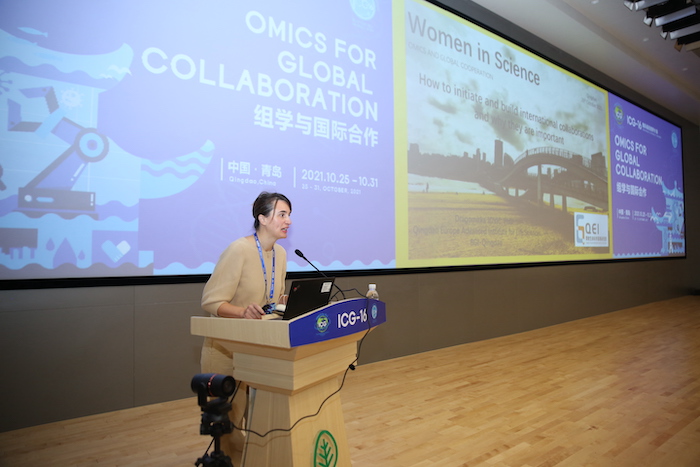
Ms. Clarie Constance Selbeck from the Consulate General of the Kingdom of the Netherlands introduced the Netherlands Innovation Network, presented on the strength of the Netherlands in science and R&D, provided data on public-private cooperation and the gender gap in the Netherlands, as well as the academic environment at Dutch universities.
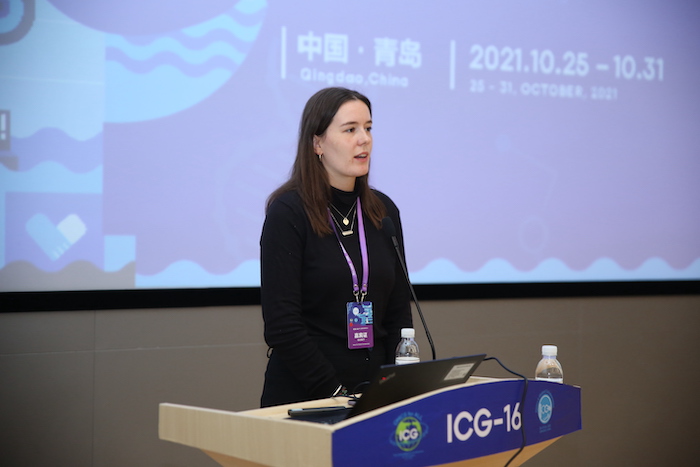
Professor Sulan Luo of Hainan University presented her latest preclinical study on the analgesic effect of coneshell derived αO-Conotoxin GeXIVA in targeting α9α10 nicotinic acetylcholine receptors. Coneshell venomics a topic we’ve published on and covered in GigaBlog before.
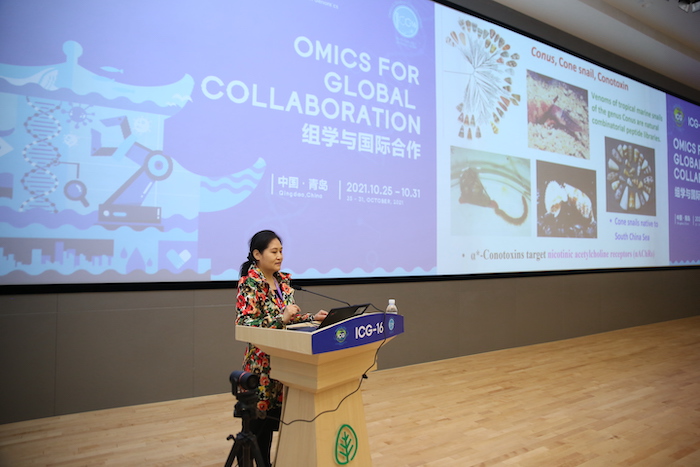
Also fitting well into the marine location and theme of the main ICG conference, Dr. Yunyun Zhuang from Ocean University of China presented her work on Cyanate, the overlooked nitrogen salt in the ocean and its utilization by marine eukaryotic algae.
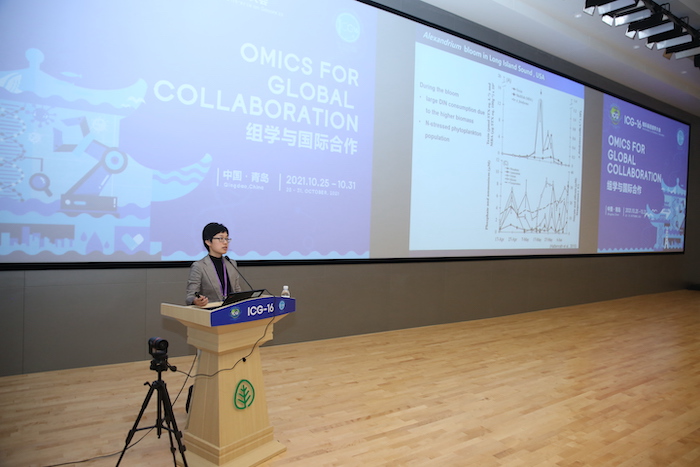
Dr. Fei Xu from Jiangnan University introduced her work on the De Novo design of a hierarchical assembly of collagen.
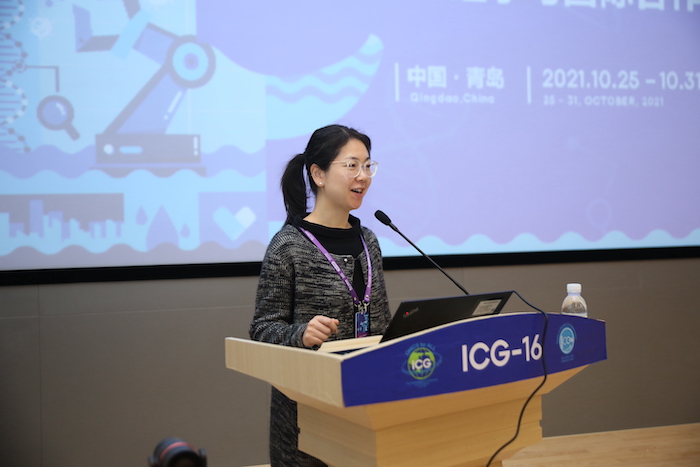
Professor Mahinur S. Akkaya from Dalian University of Technology shared her perspectives on Gender Equality in Science: What is to be done? With some practical suggestions in how to address the large gender gap in Science, Prof Akkaya suggested instructors and parents need to avoid gender stereotyping and unconscious gender bias, highlight role models and the contribution of women in science, better develop gender awareness in the classroom, and increase girls’ self-confidence by encouraging relevant single-sex activities. She also gave suggestions to for improving gender bias in scientific organizations and societies.
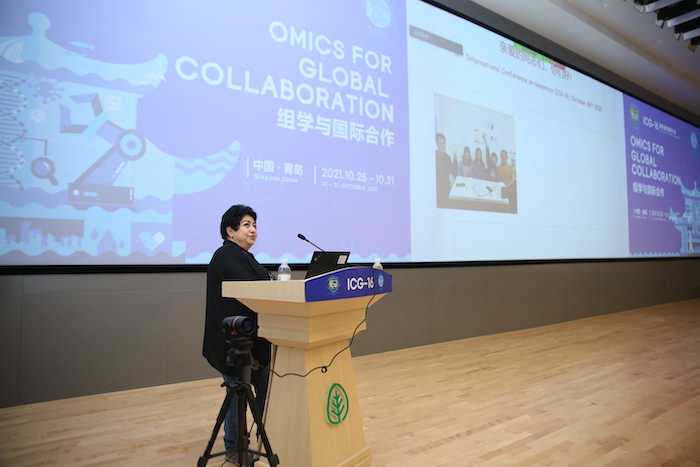
Next were some great talks on infectious disease, Dr. Zhihua Ou from the Institute of Precision Health, BGI-Research presented her team’s research progress on HPV-induced cervical cancer. Dr. Jingyue Bao from China Animal Health and Epidemiology Center introduced her work on genomic evolution of African swine fever virus. Professor Jun Yu from The Chinese University of Hong Kong presented on the Role of Gut Microbiota in Colon Cancer.
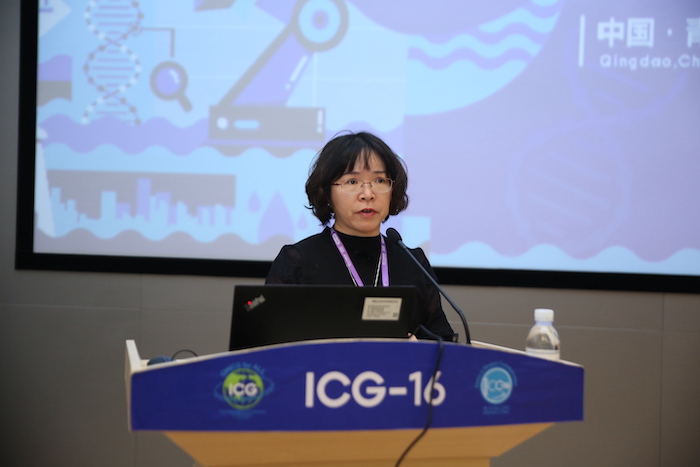
Dr. Zhihua Ou from the Institute of Precision Health, BGI-Research presented her team’s research progress on HPV-induced cervical cancer. Cervical cancer is the fourth most common cancer in women, which is caused by the persistent infection of high-risk Human Papillomavirus (HPV). To eliminate cervical cancer, all countries should work together in three main areas: HPV vaccination, HPV screening and disease treatment; so that the incidence rate can be kept in less than four per 100,000 women. While this approach is already paying off in many wealthy countries, due to the uneven economic development of countries around the world it will take decades to eliminate cervical cancer globally. The BGI research team used high-throughput viral genome sequencing technology to clarify the prevalence of high-risk HPV in China, and combined single-cell sequencing technology and BGI’s self-developed spatial transcriptome technology to reveal the tumor microenvironment of cervical squamous cell carcinoma for the prevention and treatment of HPV Cervical cancer.
Dr. Xiaoyu Wei from BGI-Research shared her study on the progress in axolotl brain regeneration research using spatiotemporal transcriptomics. The brains of mammals, including humans, have a very limited ability to regenerate after birth. As a model organism with a brain not too dissimilar to that of mammals, the axolotl provides an ideal experimental model for regenerative research. Based on spatiotemporal transcriptomics, her study analyzed the dynamic distribution of cell types during the brain development and injury regeneration of axolotl from single-cell resolution, and discovered important stem cell subtypes during the regeneration process.
There were also a few speakers who could not attend the conference in person, but contributed inspiring reports online. The head nurse of Union Hospital in Wuhan, Jin Yan, shared her story on being at the front line of the COVID-19 pandemic when it started, showing her photos of hospitals, communities, nursing homes and children’s rehabilitation centers during the pandemic. Associate Professor Yuli Li of the Ocean University of China introduced MolluscDB: an integrated functional and evolutionary genomics database for the hyper-diversified Mollusca animal phylum. Rounding off the meeting with an education perspective Ms. Yang Rui, Director of School Office of High School affiliated to Renmin University of China, shared her perspective on “Girls in Life Sciences: How to Cultivate girls’ curiosity and confidence in high school”.
We look forward to next years meeting, and hope further barriers such as international borders will be more open and allow greater attendance and greater participation.
Hongfang Zhang, Junior Editor, GigaScience